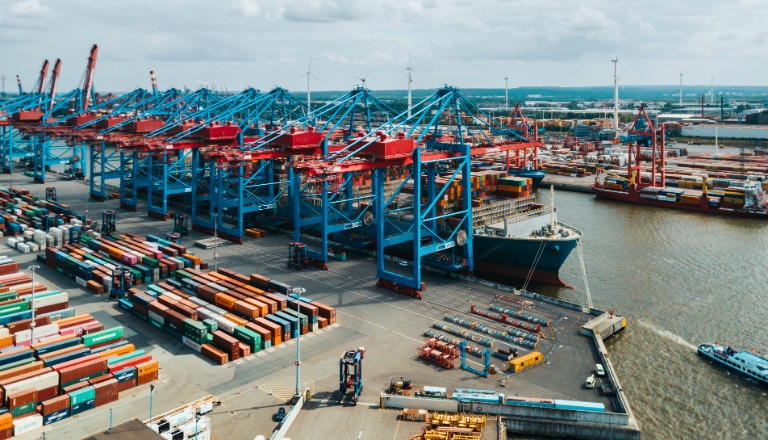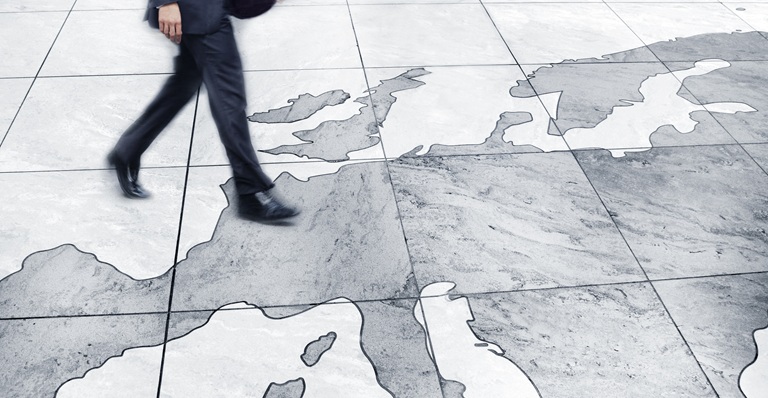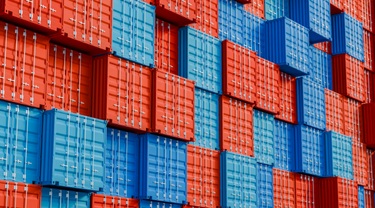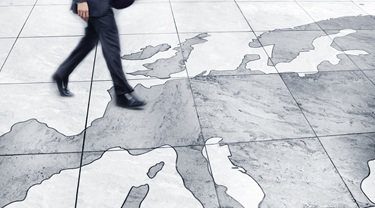In the heart of Europe, Germany is a powerhouse that fuels the flow of trade throughout the continent and around the globe.
While its vast market size, educated population, political stability and world’s third-largest nominal gross domestic product (GDP) make it a safe bet for exporters, Germany’s robust business infrastructure and capacity for innovation attract investors.
With its $796.15-billion infrastructure fund and increased defence spending to 3.5% of GDP by 2029, Germany is poised for an economic turnaround after two years of stagnant growth. And as Canada, Europe and the United Kingdom rethink past trade relationships with a view to diversifying, Canadian exporters are well-positioned to step into Germany’s growth trajectory.
Steady, dependable, always there in a pinch—it’s a reputation Canada has long enjoyed on the international stage. And as the world adapts to new economic and trade realities, Canada’s standing as a consistent trading partner is creating opportunities for exporters beyond North America.
While there are shared values, established free trade agreements and similar geopolitical profiles, Canada and European countries, including the United Kingdom (U.K.), are also finding common ground in diversifying trading partners, while exploring more consistent supply chains and growth sectors.
These sectors include cleantech, energy transition, AI-powered change, advanced manufacturing, critical mineral sector development and agri-food, says Sasan Fouladirad, economist and country risk analyst with Export Development Canada’s (EDC) Economic and Political Intelligence Centre.
“Canada is a safe, reliable partner for Europeans, particularly in industries that support renewable energy and energy transition,” says Fouladirad.
“We’re going to see more closeness between Canada and Europe—especially over the coming years, you’ll see more trade developments happening on a bilateral basis and lots of opportunities opening for both regions,” says Fouladirad.
How Canadian exporters can reduce trade risks and successfully enter high-growth European markets.
With the recent signing of the new EU-Canada Strategic Partnership of the Future and EU-Canada Security and Defence Partnership, not to mention the well-established Canada-European Union Comprehensive Economic and Trade Agreement (CETA), the stage is set for even more Canadian exporters to make their mark in Europe, says Klaus Houben, EDC’s business development director for Europe, based in Düsseldorf, Germany.
“Trade diversification is on the agenda. There are a lot of opportunities for Canadian companies. I think what’s highly appreciated by the markets in Germany, the U.K. and Canada are the shared values. Canada is well-received and appreciated in these markets,” Houben says.
The backdrop for those opportunities for Canadians dates to 2017 with the Comprehensive Economic and Trade Agreement (CETA). In 2024, bilateral trade was valued at $30.5 billion, including $6.8 billion in Canadian exports to Germany. This represents a 41% increase in trade from pre-CETA levels.
Germany’s industrial landscape is diverse with key sectors, including automotive, mechanical engineering, chemicals and electrical engineering, dominating across various regions. Major hubs include the Rhine-Ruhr area (industrial heartland), Munich and Stuttgart (high-tech and automotive) and Frankfurt (finance). The former East Germany also boasts high-tech centres, like Dresden, Jena and Leipzig.
Germany—Europe’s largest energy consumer—aims to generate at least 80% of its electricity from renewables by 2030, as part of its Energiewende (energy transition) plan. It’s investing significantly in wind and solar power, hydrogen production and infrastructure, and grid modernization.
The German auto industry, which accounts for 6% of the country’s GDP, is undergoing a major recalibration to electric vehicles after a century of gas-powered innovation.
Export opportunities in Germany’s energy transition and digital economy
Germany’s focus on renewable energy, decarbonization, energy efficiency and critical minerals—as well as its significant new investment in defence—presents promising opportunities for Canadian companies, says Fouladirad.
“A big part of the overall structure of European economies right now is energy transition to renewables and this shift is creating many opportunities for Canadian exporters,” he says.
“This will be a major driver of European economic growth over the next decade or two, in contrast to the United States, which may remain more reliant on traditional fossil fuels, depending on the administration.”
How Canadian innovation supports Germany’s energy and data infrastructure
Germany is facing an energy crunch due to reduced power plant capacity, a slow transition to renewables and severe supply disruptions caused by the Russia-Ukraine war. As the country modernizes its grid and undertakes major infrastructure upgrades—including expanded defence spending and large-scale gigadata centre projects—Canadian exporters are well-positioned to contribute, says Mark Sullivan, EDC’s director of digital technology and advanced manufacturing.
“Like many developed economies, Germany is grappling with how to power data centres,” Sullivan notes.
“Some countries, like Ireland, quickly hit moratoria on building them due to pressure on existing grid infrastructure. What we’re seeing in a lot of markets is how do they—from an ESG (environmental, social and governance) point of view—meet these large energy demands both effectively and efficiently, which is leading to a dialogue around alternate sources such as nuclear.”
Germany’s dual goals of remilitarization and achieving climate neutrality by 2045 align well with Canadian expertise in renewable energy and critical minerals. These minerals are essential to Germany’s battery electric vehicle (BEV) auto industry, which is struggling to meet its target of 15 million BEVs on the road by 2030. The abrupt removal of subsidies in 2024 led to a 27% drop in BEV sales, increasing the urgency to secure sources of critical minerals. Canada, with its rich resources, is a natural export partner. German and European investors are actively pursuing offtake agreements with Canadian mines to secure future supply and support export capacity.
Green hydrogen is another key area of focus, particularly for heavy industries such as steel and iron, where emissions are costly and difficult to reduce. The EU’s medium- and long-term investment in hydrogen opens doors for Canada’s 170 established hydrogen and fuel cell technology companies.
Canadian companies are also making inroads in black mass recycling—the recovery of critical minerals such as lithium, cobalt, manganese, copper and graphite from shredded lithium battery components. This process is gaining traction in Germany as part of its circular economy strategy.
Germany’s growing artificial intelligence (AI) capabilities are driving demand for renewable energy to power gigadata centres. While Canadian companies may not be building the physical facilities, they can play a vital role in adjacent industries such as turbine power generation, cooling systems, electrical infrastructure, HVAC, water treatment and AI-powered cybersecurity software.
Feeding demand: How Canada can help Germany strengthen food security
With the agri-food industry remaining one of the most important sectors of Europe’s economy, it’s vital that the region meets the challenge of food security in the coming years—especially considering the ongoing Russia-Ukraine war, which has disrupted the availability of grain, corn, seafood and fertilizers. In response, Germany, like other European governments, is making major investments in agriculture and food technology to strengthen supply chains and reduce vulnerabilities.
As the largest food and beverage market in the European Union, Germany imported more than US$76 billion in consumer-oriented agricultural products in 2022 alone, underscoring the sector’s critical role in the national economy and its openness to international suppliers. For Canadian agri-food exporters, this presents a valuable opportunity—particularly in seafood, where Germany ranks as the world’s eighth-largest importer, with strong demand for premium products such as lobster, scallops, and sustainably sourced fish. These trends highlight the growing potential for Canada’s seafood exports to Europe, especially as Germany seeks reliable partners to support its evolving food supply chain.
“Events like Anuga, the world’s leading food and beverage trade fair held in Cologne, offer Canadian companies a prime opportunity to network, showcase innovation and build relationships in the European market,” says Klaus Houben. “EDC will be attending this fall and sponsoring part of the Canada pavilion and working with several buyers on B2B meetings at the show.”
EDC interactive tool offers economic insights on Canada’s Top 75 trading partners.
Challenges Canadian exporters face in the German market
While Germany offers significant opportunities, Canadian exporters are well-positioned to step into Germany’s growth trajectory to “long-standing business relationships. Like many European countries, Germany places a high value on long-standing business relationships, responsive fulfilment and a deep understanding of complex regulations that govern everything from industrial standards to food production. Building trust and demonstrating reliability are essential for long-term success.
Despite its investment in the military and infrastructure, Germany is facing a shortage of engineers. This shortage presents an opportunity, but also a challenge: Canadian companies hoping to leverage CETA provisions for skilled labour mobility must contend with strict regulatory requirements for working within Germany and the broader EU.
Shipping distance and associated costs remain a barrier to doing business with EU countries, even with the 99% tariff-free access provided under CETA. To stay competitive, Canadian exporters can consider strategies such as bundling shipments to supply multiple retailers in a single delivery, thereby reducing logistics costs and improving efficiency.
How to build trust and long-term partnerships in Germany
Long-standing regional supplier relationships can pose a significant challenge for Canadian companies aiming to enter Germany’s manufacturing sectors. German companies often favour established local or regional partners, making it difficult for new entrants to break in.
German companies are known for their deliberate and methodical approach to selecting suppliers. Once trust is built, they tend to commit to long-term contracts. Unlike the more transactional nature of many North American firms, German businesses prioritize relationship-building and reliability. For Canadian exporters, this means investing time, resources and personnel into developing strong, sustained partnerships to gain traction in the market.
How to enter the German market successfully
Success in Germany hinges on building trusted partnerships, understanding procurement processes and aligning with Germany’s long-term policy goals in sustainability and security. EDC’s article, Edging out the competition in global markets, has key insights to support exporters.
- Short-term risk rating: Low
- Top Canadian exports (2024): Mining, energy products, metals and minerals, machinery, transportation equipment, chemical products
- Canadian exports total value (2024): $6.8 billion
- International trade agreement with Canada: Canada-European Union Comprehensive Economic and Trade Agreement (CETA)
- GDP (2025 nominal): US$4.5 trillion
How EDC can help you access new markets
EDC is part of the Government of Canada’s trade ecosystem—a network of experts dedicated to helping you save time, better understand your target markets and secure the capital you need to grow. Led by the Trade Commissioner Service (TCS), this solution-oriented network of departments and Crown corporations helps solve export challenges and offers fresh perspectives, empowering Canadian exporters to expand and succeed both at home and abroad.
You can also count on EDC’s team of world-class economists and analysts for timely economic insights. Our reports—including the Global Economic Outlook, Country Risk Quarterly and detailed market profiles—are designed to help you make informed decision. Through our TradeInsights portal, you’ll find a rich library of resources, including guides, articles, webinars and podcasts. Also, check out our cleantech insights and resources.
Need working capital to manage existing contracts or evolve your business? EDC guarantees can help you access more working financing from your financial institution. By sharing some of the risk associated with your growth, we enable your lender to extend more credit or release assets that would otherwise be held as collateral.
Concerned about supply chain disruptions or non-payment for goods shipped to the U.S. or other markets? EDC’s trade credit insurance protects you against losses if your buyer fails to pay.
As Canadian businesses navigate ongoing market uncertainty, EDC is stepping up support for exporters and investors. The EDC Trade Impact Program will provide an additional $5 billion over two years to eligible companies, offering a range of solutions to help you adapt and thrive in today’s global landscape.
Continue series

Part 2 of 3 in series
France export outlook: AI, cleantech and agri-food opportunities
Continue seriesPart 3 of 3 in series
Exporting to the United Kingdom: Opportunities, challenges and support






